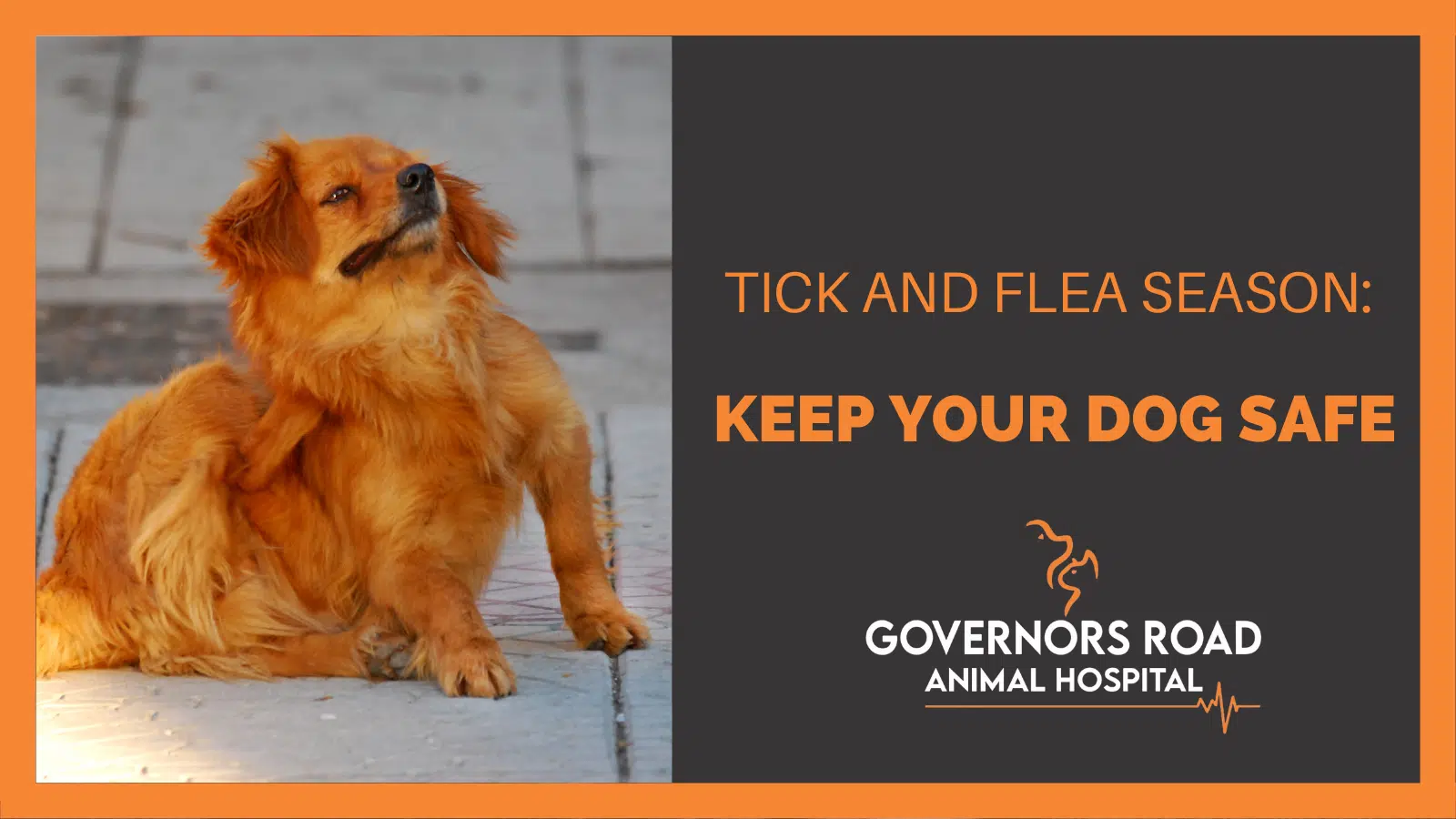
15 Apr Tick and Flea Season: Keep Your Dog Safe
Spring is a perfect time to walk your pooches! But it is also a favourable time for ticks and fleas to flourish. In Ontario, the spell of these blood-sucking parasites begins in April-May and continues until November.
The good thing is that you can prevent fleas and ticks by planning and taking preventative measures. Keep reading to know some critical information about fleas and ticks and how to keep your pets safe from these parasites.
Difference Between Ticks and Fleas
Fleas are wingless external parasites that feed on blood and can jump up to two feet high. This six-legged parasite uses any warm-blooded creature as a host, commonly targeting cats and dogs.
Ticks, unlike fleas, don’t need a host to live. They prefer to live in a humid environment and are usually found in grassy and wooded areas. When dogs visit these places, they’re most susceptible to catching ticks.
Both ticks and fleas can transmit serious diseases when engorged for long. While ticks can cause Lyme disease and Rocky Mountain Spotted Fever, Fleas are capable of transmitting tapeworms. Besides, both fleas and ticks are blood-sucking parasites. This makes them a risk factor for anemia, especially in young animals.
How to Identify the Presence of Ticks?
Ticks have a flat, teardrop shape, with six legs as larvae and eight legs as an adult.
Due to their relatively larger size, ticks are easier to notice. You can even feel them with your hands. Every time your pet comes home from a trip outside, run your hand carefully over the body. Ticks often latch around the head, neck, ears, and paws of cats and dogs. Be sure to check these areas.
If you notice ticks on your pet, remove them right away. It is also good to consult a veterinary clinic to keep your pets safe from ticks.
How to Identify the Presence of Fleas?
Unlike their ground-dwelling counterparts, fleas are much smaller, making them hardly visible to the naked eye. For this reason, they’re easily detected by their droppings, which appear as specks of dirt.
One easy way to find fleas is to use a flea comb. If there’s any presence of fleas, you’d be able to detect them through dark and tiny moving spots.
Since flea saliva is antigenic and irritating, it can cause hypersensitivity and itching. Because of this, your pet might be scratching or licking one area constantly.
How to Remove Ticks and Fleas?
When you spot a tick, grasp it with a tweezer or any tick-removing gadget and pluck it. Then, clean the area with alcohol/iodine or soap and water.
Ticks are difficult to kill. If they’re tossed out, they could easily crawl back in. It will help if you put them into isopropyl alcohol to have them killed successfully.
Next, take the dead ticks, together with your pet, to an animal hospital for examination. This way, a vet would be able to analyze engorgement levels and the tick specie to evaluate the risk of disease transmission.
In the case of fleas, consult your vet for treatment. Common flea treatments include pills, chewable tablets, topical medicines, and flea collars. Don’t forget to clean your house and vacuum everything — carpets, curtains, dog bedding, and furniture corners.
Feal and Tick Prevention Tips
Here’re some essential tips on flea and tick prevention for pets. Follow these tips to keep your pets safe and healthy.
- Visit a veterinary clinic in Dundas and receive a parasite prevention plan.
- Ensure to walk your dogs in areas where grass and shrubs are well-manicured.
- Wash your pet’s bedding with an adulticide and insect growth regulator once a week.
- Spray a safe nematodes solution in your garden/backyard to restrict flea growth.
- Place bird feeders and birdbaths away from your pets since they attract fleas/ticks.
- Mop hardwood floors with detergent every week and keep the pet area clean.



Sorry, the comment form is closed at this time.